Shenzhen Wesort Optoelectronics Co., Ltd.
Address:Building 29, Longwangmiao Industrial Zone, Fuyong street, Bao'an District, Shenzhen, Guangdong Province, China.
Phone:+86 181 2370 6862
In the coffee industry, the quality of the final cup often depends on the smallest details during processing. One crucial step is removing defective beans, foreign materials, and color inconsistencies. This is where a coffee bean color sorter plays a vital role. Advanced coffee bean sorter machines help farmers, exporters, and roasters achieve uniform quality and higher market value for their coffee products.
A modern color sorter coffee system uses high-resolution cameras, AI recognition, and precision ejection technology to separate beans based on color, shape, and size. Whether it’s green coffee beans, roasted beans, or coffee cherries, a reliable coffee color sorting machine ensures that only defect-free beans enter the market.
For example, WESORT—one of the recognized coffee bean color sorter factories—develops systems that can:
1. Detect and remove insect-damaged, moldy, immature, or discolored beans.
2. Sort roasted coffee beans into light, medium, and dark roasts for consistent quality.
3. Handle coffee cherries to separate ripe from unripe or overripe fruits.
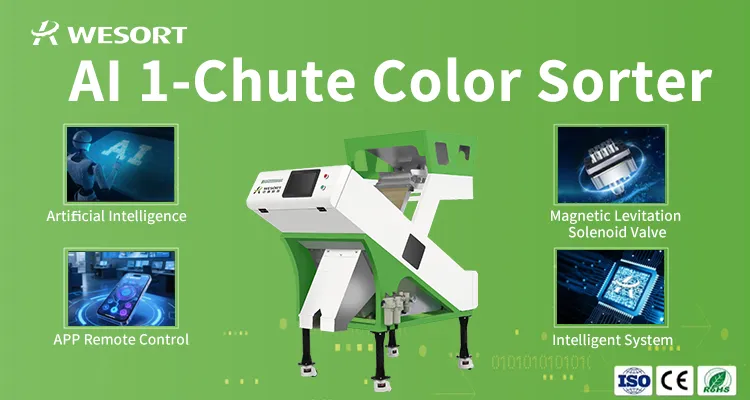
Different sorting requirements call for different designs:
Coffee beans belt color sorter – Ideal for fragile or specialty beans, reducing breakage during sorting.
Chute-type coffee color sorter – Suitable for high-capacity production lines.
AI deep learning coffee color sorter – Capable of both color and shape sorting for maximum accuracy.
Choosing the right type depends on your production scale, target market, and desired sorting precision.

Not all coffee color sorter factories offer the same level of technology and service. When choosing a coffee color sorter factory, consider:
1. Technology – High-resolution imaging, AI defect recognition, and multi-spectral lighting.
2. Capacity – From small-batch machines to industrial-scale models.
3. Durability – Long-lasting components like LED cold light sources and imported ejector valves.
4. Support & Training – Remote debugging, local service teams, and user-friendly controls.
5. Cost-effectiveness – Balance between coffee color sorter machine price and performance.
A high-quality coffee color sorter machine benefits various sectors:
1. Exporters – Meet strict international coffee standards.
2. Roasters – Ensure flavor consistency batch after batch.
3. Cooperatives – Add value to raw coffee before selling to processors.
4. Specialty coffee producers – Maintain premium quality with minimal defects.
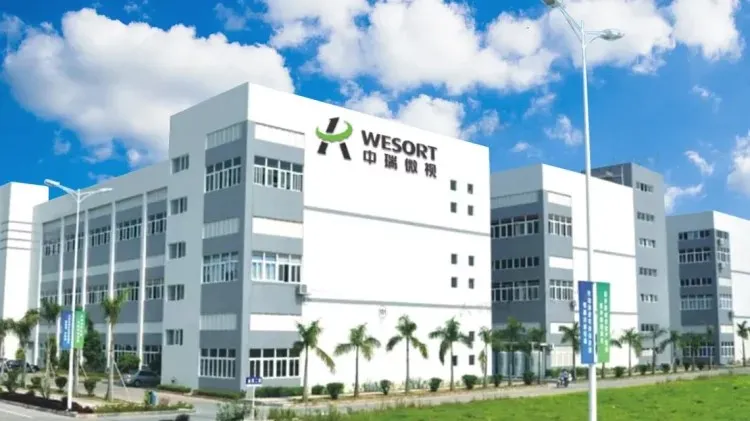
In today’s competitive coffee market, investing in a reliable coffee color sorting machine is no longer optional—it’s essential. Factories like WESORT are among the top coffee bean color sorter factories in the industry, combining advanced optical sorting technology with robust design and global support. Whether you’re looking for a coffee beans belt color sorter or a high-capacity chute machine, choosing the right coffee color sorter factory ensures better coffee quality, less waste, and higher customer satisfaction.
In the coffee industry, the quality of the final cup often depends on the smallest details during processing. One crucial step is removing defective beans, foreign materials, and color inconsistencies. This is where a coffee bean color sorter plays a vital role. Advanced coffee bean sorter machines help farmers, exporters, and roasters achieve uniform quality and higher market value for their coffee products.
A modern color sorter coffee system uses high-resolution cameras, AI recognition, and precision ejection technology to separate beans based on color, shape, and size. Whether it’s green coffee beans, roasted beans, or coffee cherries, a reliable coffee color sorting machine ensures that only defect-free beans enter the market.
For example, WESORT—one of the recognized coffee bean color sorter factories—develops systems that can:
1. Detect and remove insect-damaged, moldy, immature, or discolored beans.
2. Sort roasted coffee beans into light, medium, and dark roasts for consistent quality.
3. Handle coffee cherries to separate ripe from unripe or overripe fruits.

Different sorting requirements call for different designs:
Coffee beans belt color sorter – Ideal for fragile or specialty beans, reducing breakage during sorting.
Chute-type coffee color sorter – Suitable for high-capacity production lines.
AI deep learning coffee color sorter – Capable of both color and shape sorting for maximum accuracy.
Choosing the right type depends on your production scale, target market, and desired sorting precision.

Not all coffee color sorter factories offer the same level of technology and service. When choosing a coffee color sorter factory, consider:
1. Technology – High-resolution imaging, AI defect recognition, and multi-spectral lighting.
2. Capacity – From small-batch machines to industrial-scale models.
3. Durability – Long-lasting components like LED cold light sources and imported ejector valves.
4. Support & Training – Remote debugging, local service teams, and user-friendly controls.
5. Cost-effectiveness – Balance between coffee color sorter machine price and performance.
A high-quality coffee color sorter machine benefits various sectors:
1. Exporters – Meet strict international coffee standards.
2. Roasters – Ensure flavor consistency batch after batch.
3. Cooperatives – Add value to raw coffee before selling to processors.
4. Specialty coffee producers – Maintain premium quality with minimal defects.

In today’s competitive coffee market, investing in a reliable coffee color sorting machine is no longer optional—it’s essential. Factories like WESORT are among the top coffee bean color sorter factories in the industry, combining advanced optical sorting technology with robust design and global support. Whether you’re looking for a coffee beans belt color sorter or a high-capacity chute machine, choosing the right coffee color sorter factory ensures better coffee quality, less waste, and higher customer satisfaction.

In the world of walnut processing, even the smallest imperfection can significantly impact product quality, market price, and brand reputation. Mold, insect damage, broken pieces, or inconsistent color are common defects that reduce the value of wa...
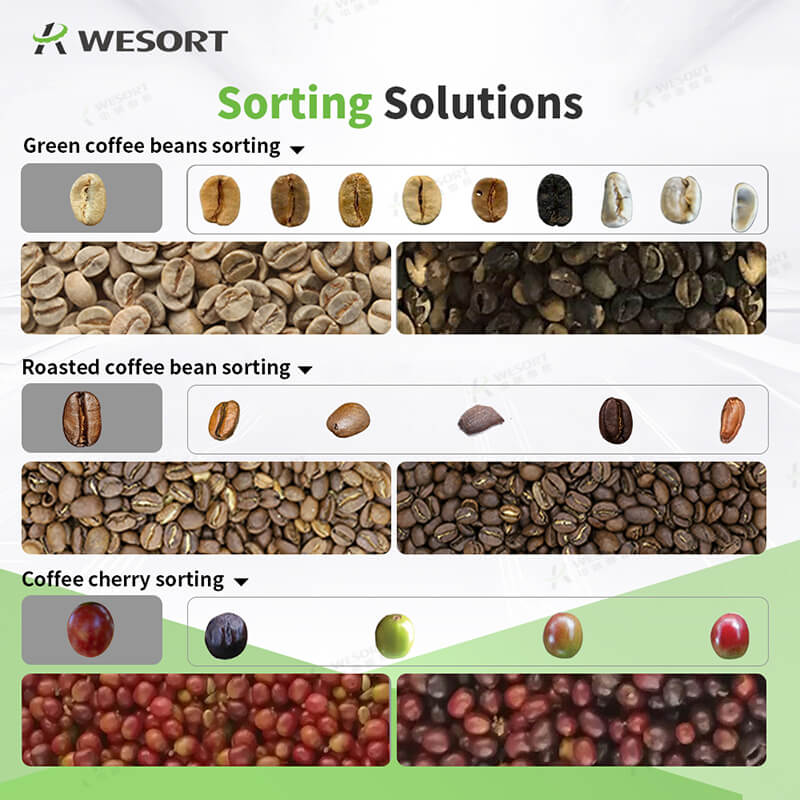
In the competitive coffee industry, quality is everything. Yet defects such as moldy beans, insect damage, immature coffee cherries, and inconsistent roasting levels can severely impact the taste, aroma, and grade of your coffee. Traditional sortin...
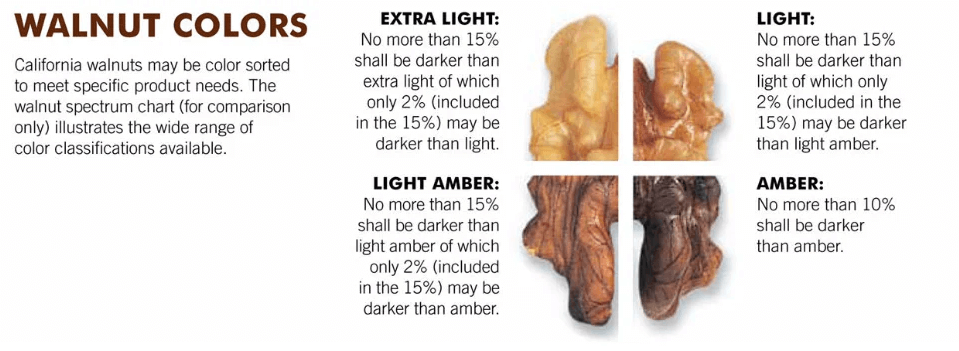
The demand for high-quality, uniformly sorted walnuts is rising globally due to increasing consumption, especially in the health food and snack industries. To meet market expectations, walnut processors are looking for advanced walnut sorting machi...
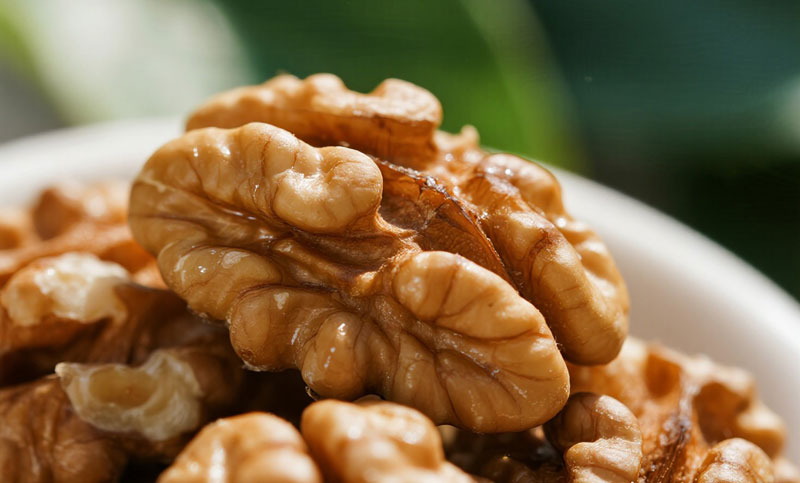
In the nut deep processing industry, the multi-level and accurate sorting of walnut kernels is not only related to product quality, but also directly affects corporate profits and brand reputation. However, many factories still face three major pro...

Meta Description: Looking for the top hazelnut sorting machine manufacturer? WESORT offers advanced hazelnut color sorters with AI deep learning to efficiently remove defects, pests, and foreign materials. Boost your hazelnut processing efficienc...
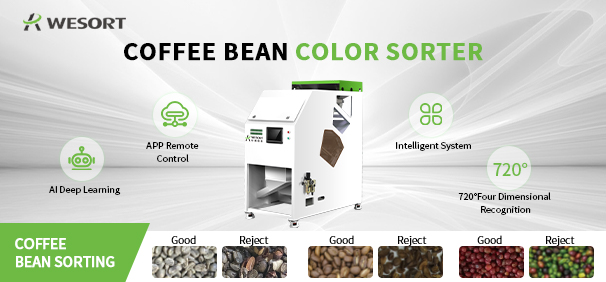
With the growing popularity of specialty coffee, the purity of coffee beans determines the aroma and taste of a cup of coffee. Achieving 99.9% purity requires high-performance coffee bean sorting equipment. Among Chinese coffee bean color sorter ma...
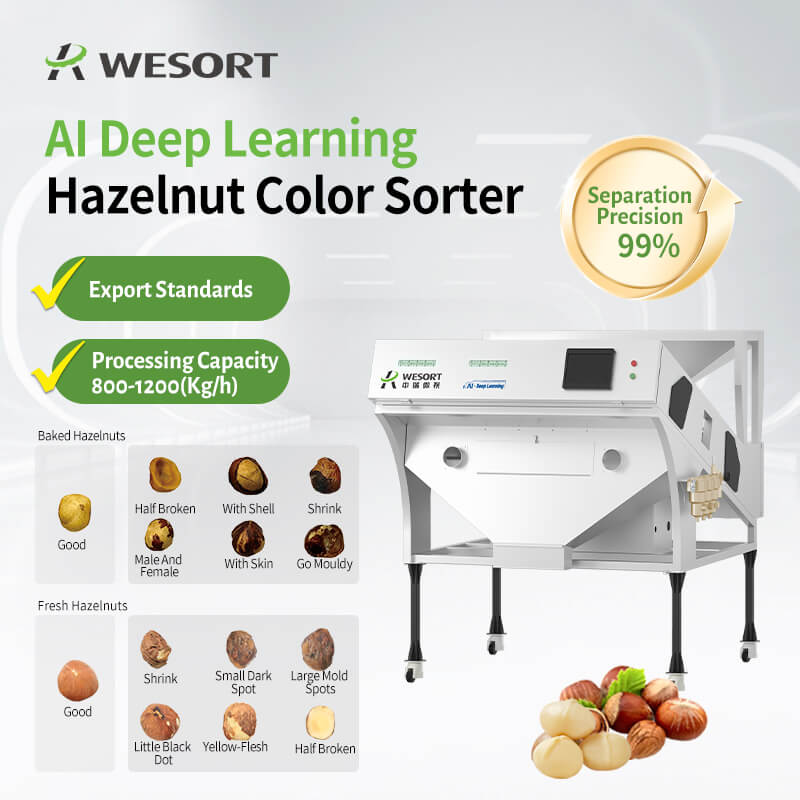
What's the most vexing issue in the hazelnut industry chain? It's not yield, but quality. Defects like mold, wrinkled skin, and foreign matter not only reduce product value but can also put export orders at risk. The solution isn't to increase the ...
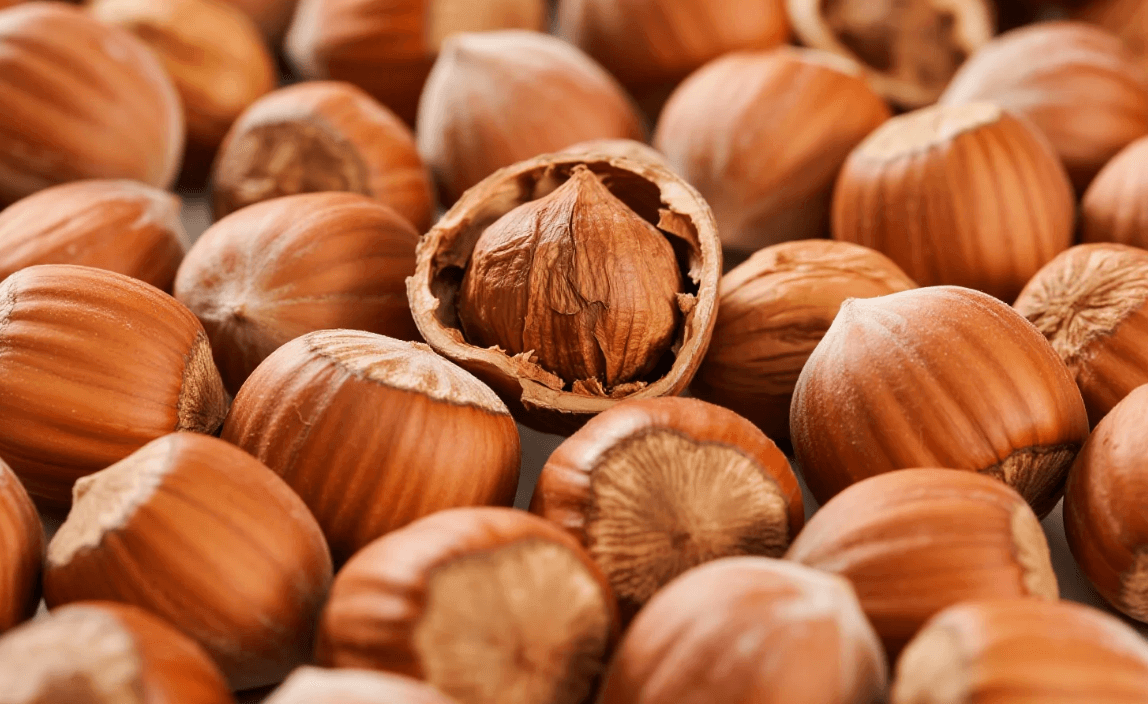
Every hazelnut tells a story—about the soil it grew in, the care during harvest, and the precision of its processing. Yet between farm and final product, hidden defects like mold, insect damage, and discoloration can turn premium hazelnuts into cos...

Plastic waste recycling is one of the most pressing challenges in today’s sustainability-driven world. Proper plastic sorting ensures high-quality recycled materials, reduces environmental impact, and improves profitability for recycling businesses...
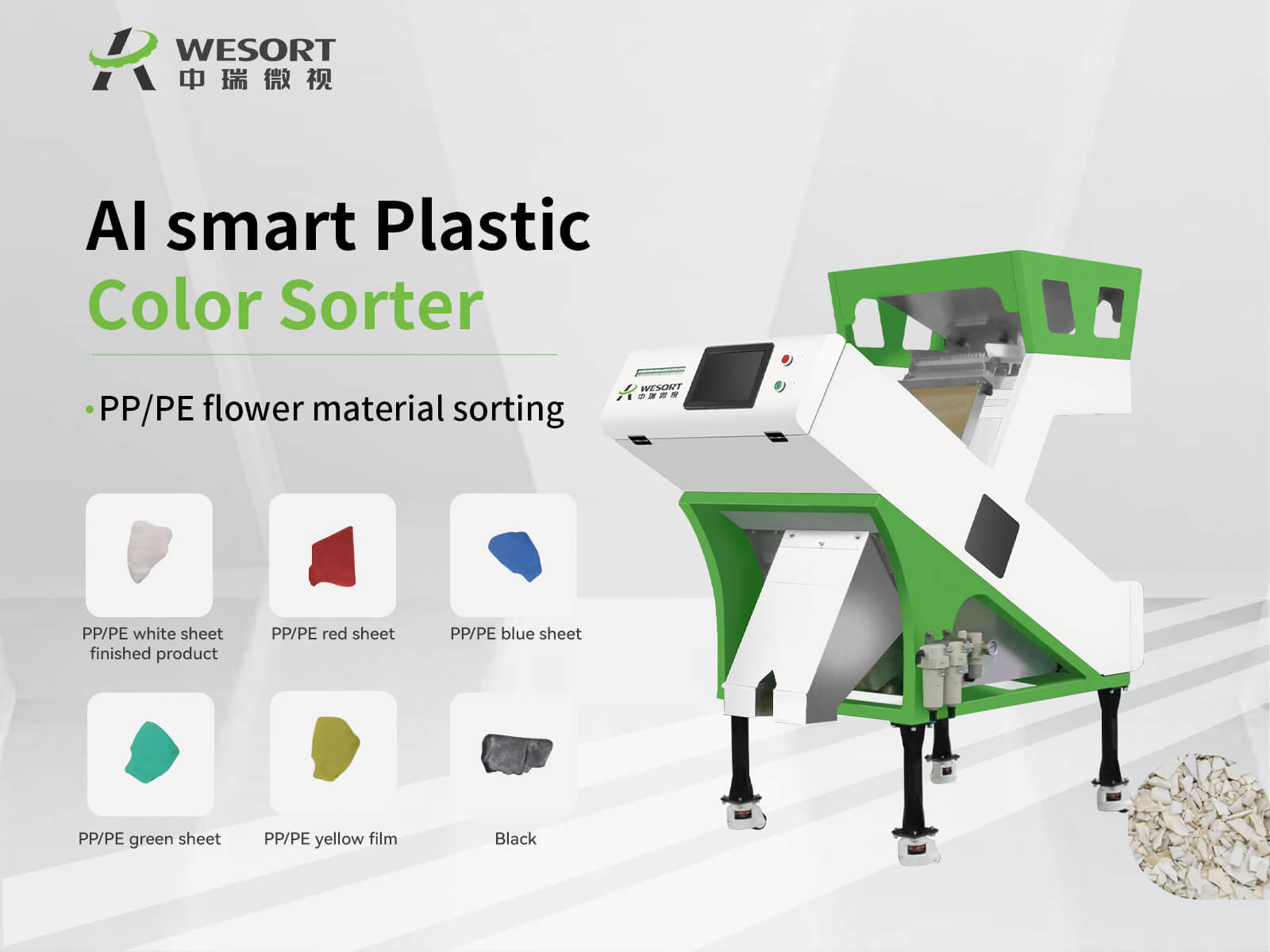
In the plastic recycling industry, purity and efficiency directly determine profitability. As global demand for recycled plastics increases, manufacturers need advanced solutions to separate impurities, improve yield, and ensure consistent product ...
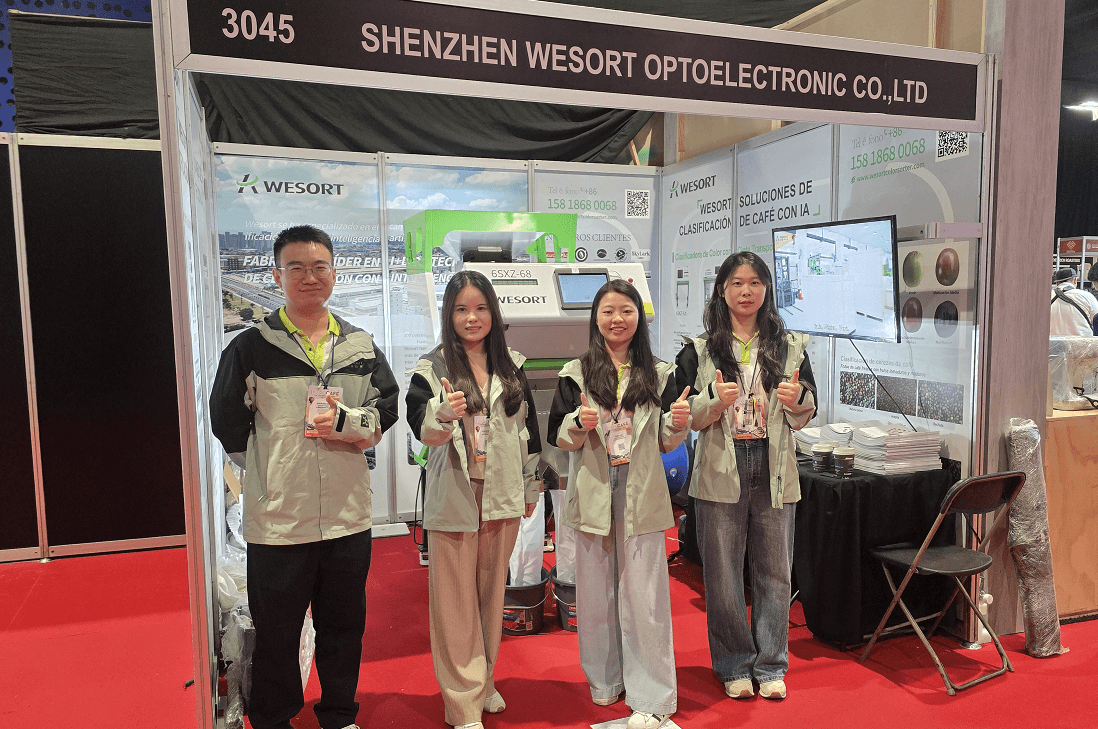
In Mexico, coffee is more than just a drink — it’s a culture, a tradition, and a vital industry. Yet, challenges like impurities, pest damage, and uneven coloration often diminish the value of even the most carefully cultivated beans. At EXPO CAFÉ...
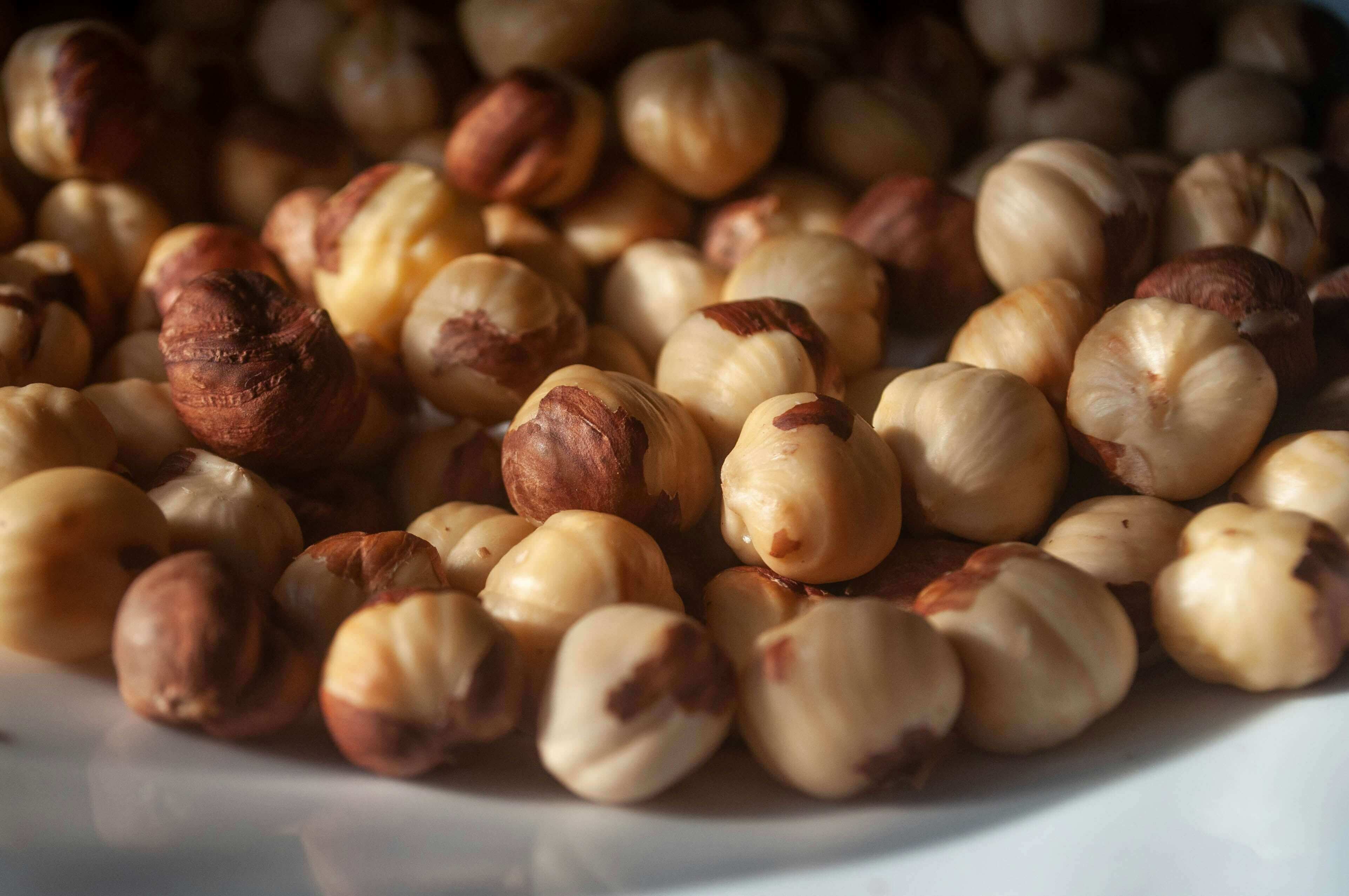
The global demand for hazelnuts continues to rise, driven by the growth of confectionery, bakery, and healthy snack markets. As consumption increases, so does the importance of quality control. Hazelnut processors face mounting pressure to deliver ...
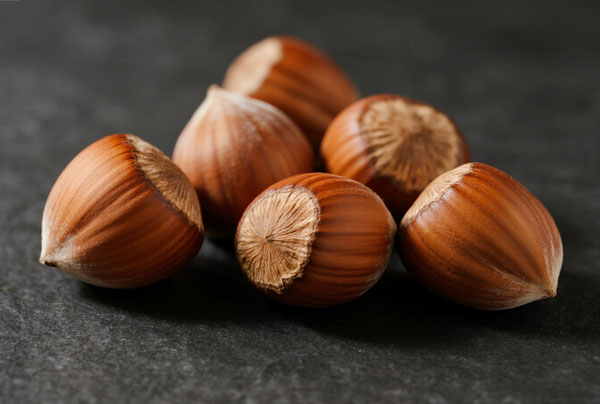
Hazelnuts are widely used in confectionery, bakery, and snacks, where product quality directly affects market value. However, hazelnut processing often faces serious challenges, such as pest infestation, seasonal labor shortages, and inconsistent m...
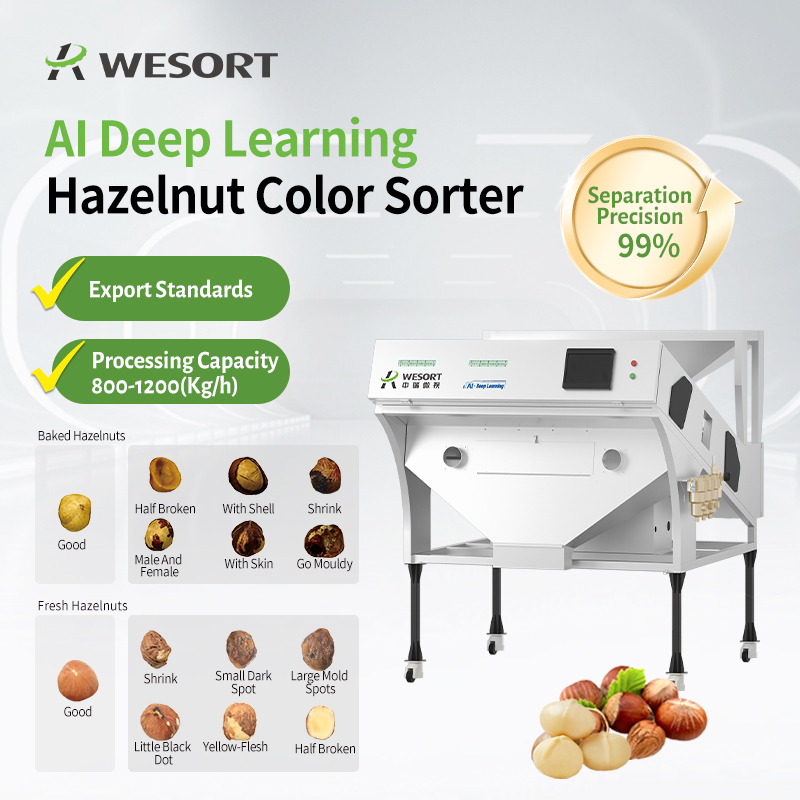
Hazelnut is the nut of the hazel and therefore includes any of the nuts deriving from species of the genus Corylus, especially the nuts of the species Corylus avellana. It is also known as cobnut or filbert nut according to species. A cob is roughl...
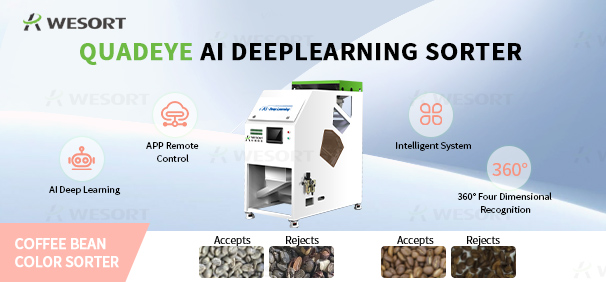
When you enjoy a smooth cup of coffee, you may not realize how much work goes into ensuring its purity and flavor. From harvest to cup, every step matters—and one of the most critical yet often overlooked stages is coffee bean sorting. Common Cof...
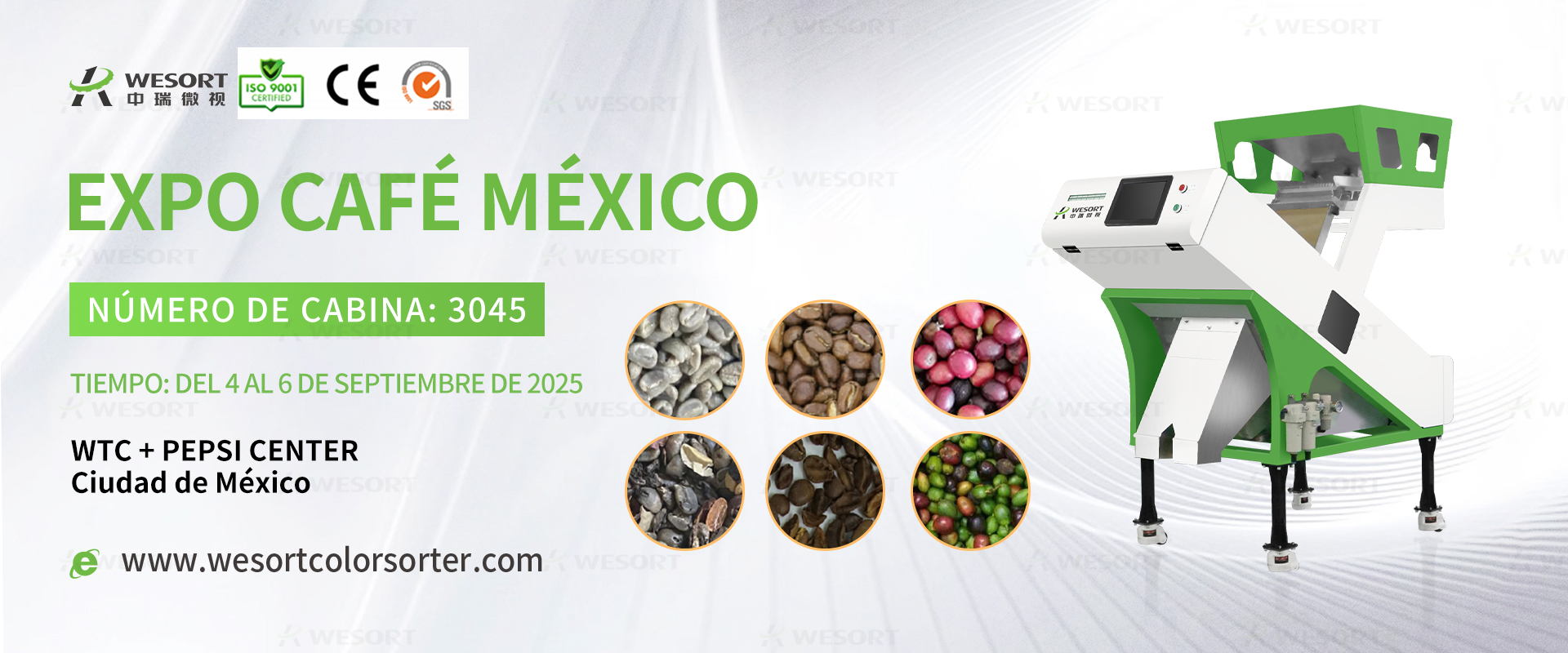
Dear Coffee Industry Partners, The Mexican Coffee Shop Expo 2025 is just around the corner—and WESORT , a leader in intelligent sorting technology, will be there to showcase our core solution for coffee processors: Coffee Bean Color Sorters. Mark...
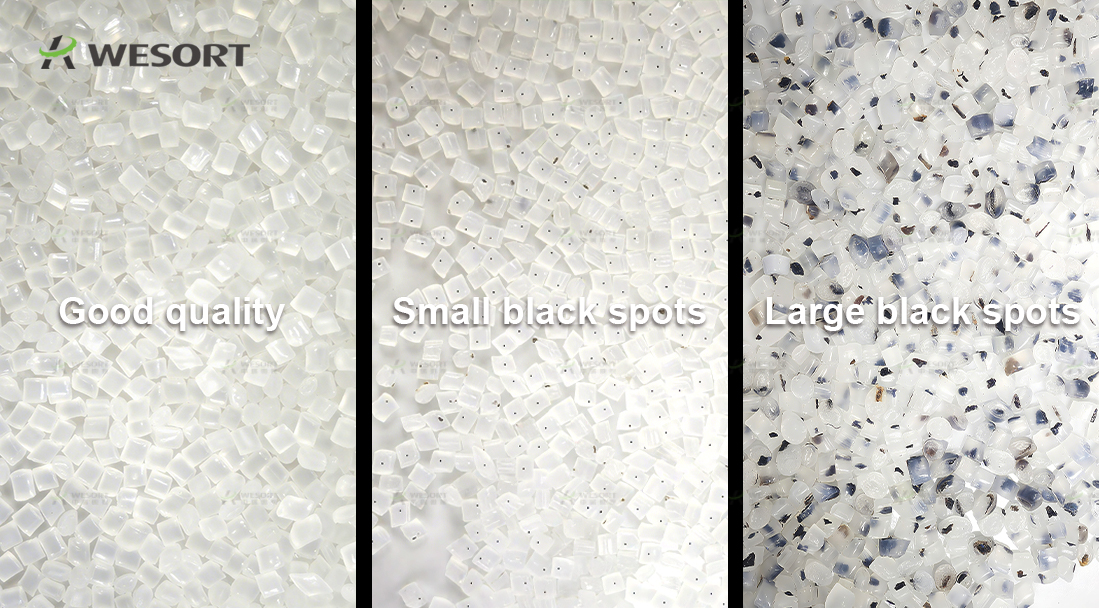
In the plastic pellet production process, color purity often directly determines the product's selling price and market competitiveness. Especially for transparent, white, or light-colored plastic pellets, even tiny black specks can affect the appe...
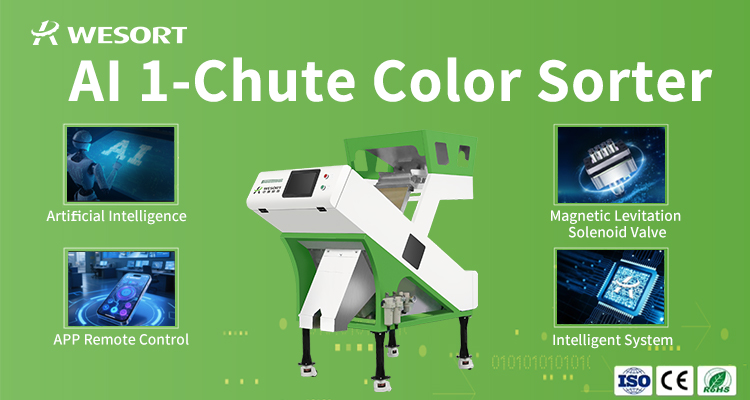
In modern agriculture, food processing, and recycling, quality control plays a vital role. This is where an optical sorter comes in. Many buyers often ask: What is an optical sorter? What does it do? How much does it cost? And how is WESORT optical...
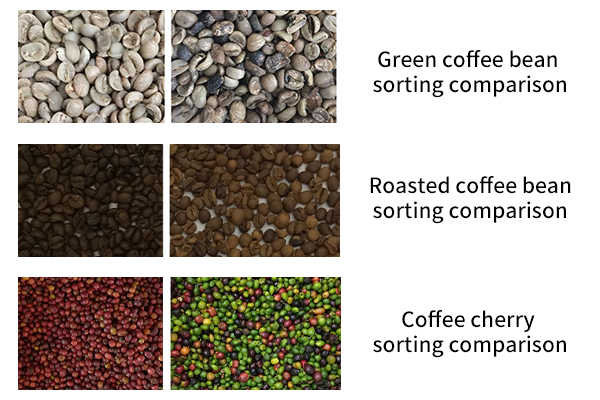
In the coffee industry, the quality of the final cup often depends on the smallest details during processing. One crucial step is removing defective beans, foreign materials, and color inconsistencies. This is where a coffee bean color sorter plays...

Coffee processing is a complex and meticulous task that involves several stages to transform raw coffee cherries into the high-quality beans we enjoy in our morning brew. One crucial step in this process is the sorting of coffee beans based on thei...

In the world of walnut processing, even the smallest imperfection can significantly impact product quality, market price, and brand reputation. Mold, insect damage, broken pieces, or inconsistent color are common defects that reduce the value of wa...

In the competitive coffee industry, quality is everything. Yet defects such as moldy beans, insect damage, immature coffee cherries, and inconsistent roasting levels can severely impact the taste, aroma, and grade of your coffee. Traditional sortin...

The demand for high-quality, uniformly sorted walnuts is rising globally due to increasing consumption, especially in the health food and snack industries. To meet market expectations, walnut processors are looking for advanced walnut sorting machi...

In the nut deep processing industry, the multi-level and accurate sorting of walnut kernels is not only related to product quality, but also directly affects corporate profits and brand reputation. However, many factories still face three major pro...

Meta Description: Looking for the top hazelnut sorting machine manufacturer? WESORT offers advanced hazelnut color sorters with AI deep learning to efficiently remove defects, pests, and foreign materials. Boost your hazelnut processing efficienc...

With the growing popularity of specialty coffee, the purity of coffee beans determines the aroma and taste of a cup of coffee. Achieving 99.9% purity requires high-performance coffee bean sorting equipment. Among Chinese coffee bean color sorter ma...

What's the most vexing issue in the hazelnut industry chain? It's not yield, but quality. Defects like mold, wrinkled skin, and foreign matter not only reduce product value but can also put export orders at risk. The solution isn't to increase the ...

Every hazelnut tells a story—about the soil it grew in, the care during harvest, and the precision of its processing. Yet between farm and final product, hidden defects like mold, insect damage, and discoloration can turn premium hazelnuts into cos...